Description
Repairing a Porcelain Veneer
A fractured porcelain veneer can be immediately and predictably repaired chair-side with the use of composite resin and quality porcelain bonding techniques.

Before repair. After repair.
Technical Details
Viscous, Buffered 9% Hydrofluoric Acid
Porcelain Etch is a buffered, gelled hydrolic acid designed specifically to etch fractured dental porcelain and etching porcelain veneers, crowns, or inlays. It can also be used for etching porcelain crowns before bonding orthodontic brackets. It is buffered and gelled to minimize any irritation that could occur from the hydrofluoric acid vapor.
Etch is Easy to Control and Place
Porcelain Etch features a high visibility yellow hue so you can see exactly where it is placed. It is also viscous enough to stay where you place it.
Designed to Work Together
Porcelain Etch and Silane are designed to be used together when etching porcelain to provide high porcelain-to-resin bond strengths. When used with a high-quality bonding resin, Porcelain Etch and Silane can produce one of the highest porcelain-to-resin bond strengths compared to other porcelain bonding products.
Clinicals
Porcelain Surface Before and After Porcelain Etch
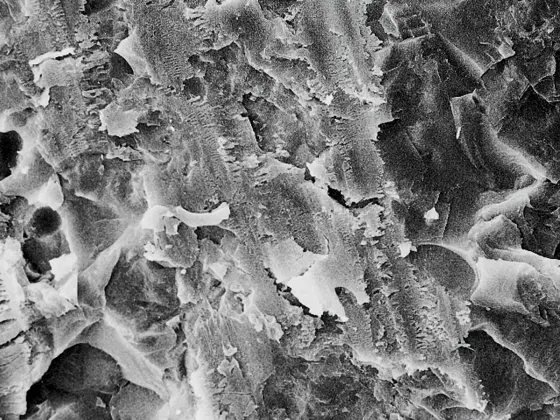
Diamond-cut porcelain surface. (Photo courtesy of Dr. Cornelis Pameijer)

Same porcelain surface following a 90-second etch with Ultradent Porcelain Etch. (Photo courtesy of Dr. Cornelis Pameijer)
Videos
Procedures
Preparing the Porcelain
See Instructions for Use for complete instructions, warnings, and precautions.Step 1
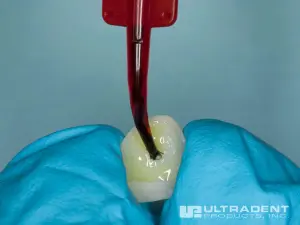
Etch clean bonding surface with Porcelain Etch for 90 seconds, rinse, and dry.
Step 2
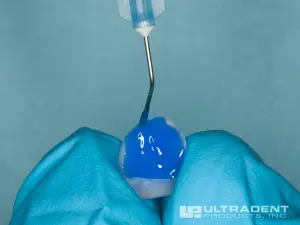
CLINICAL TIP: Apply phosphoric acid (Ultra-Etch™ etchant) for five seconds to remove porcelain salts and debris formed by hydrofluoric acid etching. Rinse and air dry.
Step 3
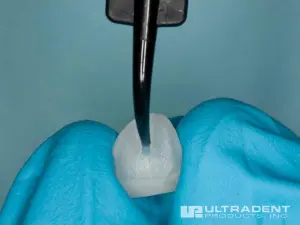
Apply a puddle coat of Silane to inside surface for 60 seconds, dry, and set prosthesis aside. Do not rinse.
Research & Studies
Repairing fractured porcelain: how surface preparation affects shear force resistance.
Pameijer CH, Louw NP, Fischer D. Repairing fractured porcelain: how surface preparation affects shear force resistance. J Amer Dent Assoc. 1996;127(2):203-9.
http://www.ncbi.nlm.nih.gov/pubmed/8682989 – Pameijer CH, Louw NP, Fischer D.

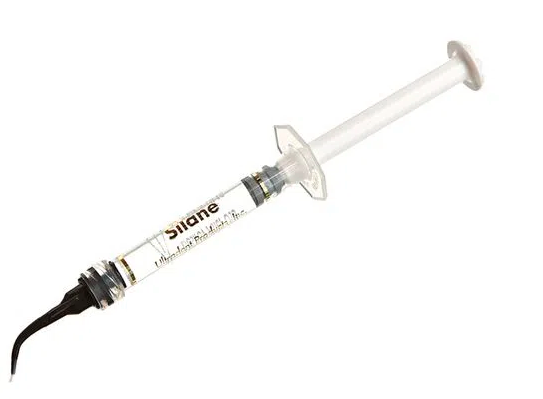

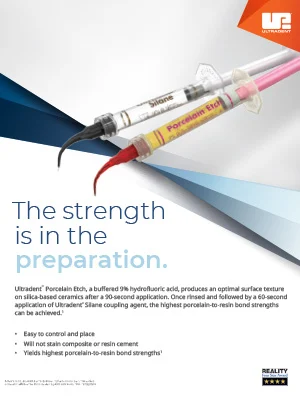






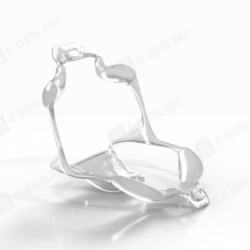
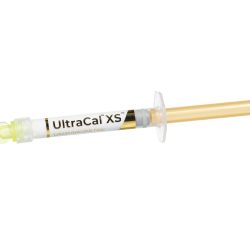



Reviews
There are no reviews yet.